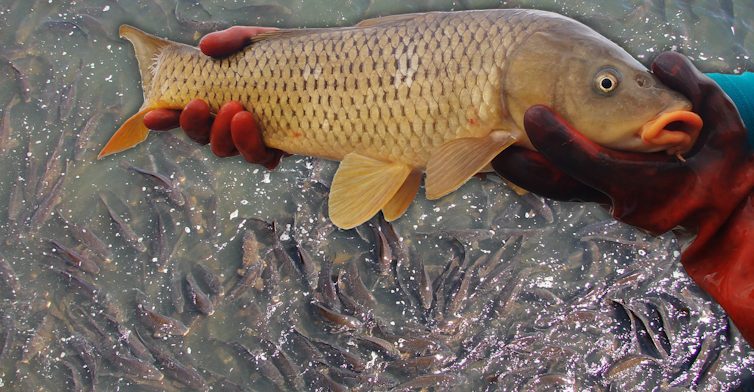Belgium.- Belgian, English and Australian scientists are calling on the Australian authorities to review their decision to introduce the carp herpes virus as a way to combat the common carp having colonised the country’s rivers. In a letter published in the journal Science, they not only believe that this measure will be ineffective but that it also represents a risk to ecosystems.
On a global scale, the common carp (Cyprinus carpio) is one of the most important fish species in fish farming. Its annual production ranges between 4 and 5 million tonnes. Initially introduced to Australia for production in fish farms, the species has gradually colonised the rivers to the point of dominating the indigenous species. One of the methods proposed by the Australian government to reduce the number of carp is to release a virus which is deadly to this species, the cyprinid herpesvirus 3 (CyHV-3, also called the Koi herpesvirus or KHV) in rivers. However, scientists note that data currently available on the carp’s biology, the pathogeny of the virus and the ecology of Australian rivers suggests that this tactic will not be effective and could even represent a risk to ecosystems. It is thanks to Professor Alain Vanderplasschen from the University of Liège (Belgium) that the prestigious scientific review Science asked to issue a scientific opinion on the Australian biocontrol plan (1).
Before the large-scale release of the CyHV-3, which will be costly (the plan proposed has a budget of 18 million Dollars) and irreversible, assessments must be carried out on the virus’ actual capacity to sustainably reduce Australian carp populations living freely without harming the indigenous ecosystems.
The authors advocate for the introduction of limited testing to safely assess if the virus can effectively control carp populations without harming ecosystems.
The opinion of the scientists is notably based on work carried out for over a decade by Professor Alain Vanderplasschen from the Immunology and Vaccination Laboratory at the University of Liège who is behind the development of the first vaccine against CyHV-3.
“The discovery in our laboratory of the beneficial role of the behavioural fever expressed by carp as well as other recent results indicate that the Australian government’s biocontrol plan will not meet its objectives. This may even cause serious damage to the ecosystems”, explains Professor Alain Vanderplasschen.
“By discussing this in Science, one of the world’s most respected scientific journals, we hope that the warning will not be ignored by the Australian authorities”, notes Professor Alain Vanderplasschen.
Stay Always Informed
Join our communities to instantly receive the most important news, reports, and analysis from the aquaculture industry.
Reference:
Jonathan Marshall, Andrew J. Davison, R. Keller Kopf, Maxime Boutier, Philip Stevenson, Alain Vanderplasschen. Biocontrol of invasive carp: Risks abound. Science 23 Feb 2018: Vol. 359, Issue 6378, pp. 877. DOI: 10.1126/science.aar7827
http://science.sciencemag.org/content/359/6378/877.1
(1) Krzysztof Rakus, Maygane Ronsmans, Maria Forlenza, Maxime Boutier, M. Carla Piazzon, Joanna Jazowiecka-Rakus, Derek Gatherer, Alekos Athanasiadis, Frédéric Farnir, Andrew J. Davison, Pierre Boudinot, Thomas Michiels, Geert F. Wiegertjes, Alain Vanderplasschen. Conserved Fever Pathways across Vertebrates: A Herpesvirus Expressed Decoy TNF-a Receptor Delays Behavioral Fever in Fish. Cell Host & Microbe, Volume 21, Issue 2, p244–253. DOI: https://doi.org/10.1016/j.chom.2017.01.010
http://www.cell.com/cell-host-microbe/fulltext/S1931-3128(17)30032-X
Source: University of Liège
Editor at the digital magazine AquaHoy. He holds a degree in Aquaculture Biology from the National University of Santa (UNS) and a Master’s degree in Science and Innovation Management from the Polytechnic University of Valencia, with postgraduate diplomas in Business Innovation and Innovation Management. He possesses extensive experience in the aquaculture and fisheries sector, having led the Fisheries Innovation Unit of the National Program for Innovation in Fisheries and Aquaculture (PNIPA). He has served as a senior consultant in technology watch, an innovation project formulator and advisor, and a lecturer at UNS. He is a member of the Peruvian College of Biologists and was recognized by the World Aquaculture Society (WAS) in 2016 for his contribution to aquaculture.




